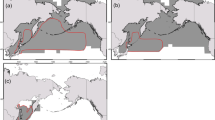Abstract
This study provides preliminary findings related to whether and how the roosting of starlings (Sturnus vulgaris) in reedbeds influences the survival of clutches of the great reed warbler (Acrocephalus arundinaceus). During the nesting seasons of 2014 and 2015, we surveyed the complete area of a mining pond in Serbia (south-eastern Europe) for great reed warbler nests, and the presence of roosting starlings was also recorded. Using the Mayfield method, we estimated the daily survival rate of great reed warbler eggs and nestlings, and compared these rates between starling roosting and non-roosting areas. Although both egg and nestling survival rates were lower in the Starling roosting than in the non-roosting areas, the differences were not significant, which was also reflected in overall nesting success. However, when only data from the time period when starling roosting occurred, the overall great reed warbler egg survival was significantly lower in roosting areas than in non-roosting areas. Our results suggest that Starling roosting did not influence the clutch survival of the great reed warbler significantly, but that there can be a negative short-term or local effect. Our study implies that a larger number of starlings and a longer roosting period could affect clutch survival more negatively.
Similar content being viewed by others
References
Cantos F.J., Jiménez M., Fernández-Renau A., Gómez J.A., de Juan F., de Miguel E. & Sanglier G. 1999. Application of sensors and thermal cameras for the census of winter roosts of birds. Ardeola 46 (2): 187–193.
Clergeau P. & Quenot F. 2007. Roost selection flexibility of European starlings aids invasions of urban landscape. Landscape Urban Plan. 8 (1-2): 56–62. DOI: 10.1016/j.landurbplan.2006.06.002
Dyrcz A. 1981. Breeding ecology of Great Reed Warbler Acrocephalus arundinaceus and reed warbler Acrocephalus scirpaceus at fishponds in SW Poland and lakes in NW Switzerland. Acta Ornithol. 18 (5): 307–334.
Fischer S. 1994. Einfluß der Witterung auf den Bruterfolg des Drosselrohrsängers Acrocephalus arundinaceus am Berliner Müggelsee. Vogelwelt 115 (6): 287–292.
Graveland J. 1998. Reed die-back, water level management and the decline of the great reed warbler Acrocephalus arundinaceus in The Netherlands. Ardea 86: 187–201.
Hensler G.L. & Nichols J.D. 1981. The Mayfield method for estimating nesting success: a model, estimators and simulation results. Wilson Bull. 93 (1): 42–53.
Janousek W.M., Marra P.P. & Kilpatrick M.A. 2014. Avian roosting behavior influences vector-host interactions for West Nile virus host. Parasit. Vectors 7. 399. DOI: 10.1186/1756-3305-7-399
Johnson D.H. 1979. Estimating nest success: the Mayfield method and an alternative. Auk 96 (4): 651–661.
Klimaszyk P., Joniak T. & Rzymski P. 2014. Roosting colony of cormorants (Phalacrocorax carbo sinensis L.) as a source of nutrients for the lake. Limnol. Rev. 14 (3): 111–119. DOI: 10.1515/limre-2015-0001
Lambertucci S.A. 2013. Variability in size of groups in communal roosts: influence of age-class, abundance of individuals and roosting site. Emu 113 (2): 122–127. DOI: 10.1071/MU12048
Mayfield H. 1975. Suggestions for calculating nest success. Wilson Bull. 87 (4): 456–466.
Meanley B. 1965. The roosting behaviour of the Red-winged Blackbird in the southern United States. Wilson Bull. 77 (3): 217–228.
Mérő T.O., Lontay L. & Lengyel S. 2015. Habitat management varying in space and time: the effect of grazing and fire management on marshland birds. J. Ornithol. 156 (3): 579–590. DOI: 10.1007/s10336-015-1202-9
Mérő T.O. & Žuljević A. 2013/2014. Birds on Bager Pond in Sombor and their statuses. Ciconia 22/23: 9–13.
Mérő T.O. & Žuljević A. 2014. Effect of reed quality on the breeding success of the Great Reed Warbler Acrocephalus arundinaceus (Passeriformes, Sylviidae). Acta Zool. Bulg. 66 (4): 511–516.
Mérő T.O., Žuljević A., Varga K., Bocz R. & Lengyel S. 2014. Effect of reed burning and precipitation on the breeding success of Great Reed Warbler, Acrocephalus arundinaceus, on a mining pond. Turk. J. Zool. 38 (5): 622–630. DOI: 10.3906/zoo-1311-54
Mérő T.O., Žuljević A., Varga K. & Lengyel S. 2015. Habitat use and nesting success of the Great Reed Warbler (Acrocephalus arundinaceus) in different reed habitats in Serbia. Wilson J. Ornithol. 127 (3): 477–485. DOI: 10.1676/13-200.1
Molnár G. 1998. Seregély Sturnus vulgaris, pp. 359–360. In: Haraszthy L. (ed.), Magyarország madarai [Birds of Hungary] 2nd ed., Mezőgazda Kiadó, Budapest, 44. pp. ISBN: 9639121053
Moskát C., Hauber M.E., Avilés J.M., Bán M., Hargitai R. & Honza M. 2009. Increased host tolerance of multiple cuckoo eggs leads to higher fledgling success of the brood parasite. Anim. Behav. 77 (5): 1281–1290. DOI: 10.1016/j.anbehav.2009.01.030
Petro R., Literak I. & Honza M. 1998. Breeding biology and migration of the Great Reed Warbler Acrocephalus arundinaceus in the Czech Silesia. Biologia 53 (5): 685–694.
Trnka A. & Grim T. 2014. Dynamic risk assessment: does a nearby breeding nest predator affect nest defence of its potential victim? J. Ethol. 32 (2): 103–110. DOI: 10.1007/s10164-014-0400-x
Uzun A., Ayyildiz Z., Yilmaz F., Uzun B. & Sağiroğlu M. 2014. Breeding ecology and behavior of the Great Reed Warbler, Acrocephalus arundinaceus, in Poyrazlar Lake, Turkey. Turk. J. Zool. 38 (1): 55–60. DOI: 10.3906/zoo-1303-35
Acknowledgements
This study was supported by the Nature Protection and Study Society - NATURA from Sombor, Serbia. T.O.M. and S.L. were funded by a grant from the National Scientific Research Base Programs of Hungary (OTKA K106133).
Author information
Authors and Affiliations
Corresponding author
Rights and permissions
About this article
Cite this article
Mérő, T.O., Žuljević, A. & Lengyel, S. Negative effect of roosting starlings (Sturnus vulgaris) on clutch survival in the great reed warbler (Acrocephalus arundinaceus). Biologia 71, 334–336 (2016). https://doi.org/10.1515/biolog-2016-0036
Received:
Accepted:
Published:
Issue Date:
DOI: https://doi.org/10.1515/biolog-2016-0036




